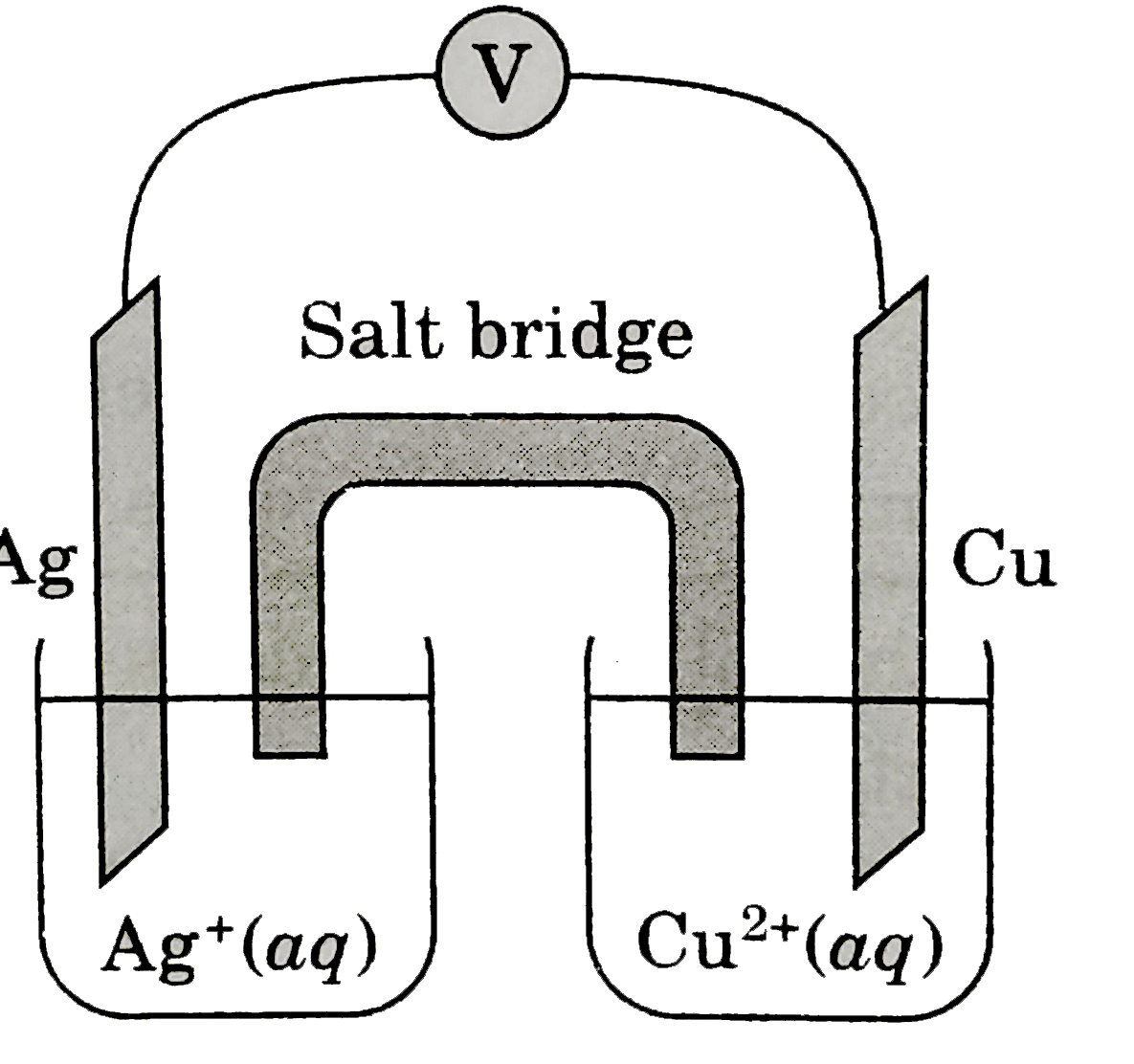Given: Fe(s)→Fe2++2e−,E∘=+0.44V
Pb(s)→Pb2++2e−,E∘=+0.13V
Ag++e−→Ag,E∘=+0.8V
Cu2++2e−→Cu,E∘=+0.34V
Which of the following metal ion will oxidise iron?
Ag+only
Cu2+ only
Pb+2 only
All
The correct Answer is:D
Fe2++2e−→Fe,E∘=−0.44V
pb2++2e−→pb,E∘=−0.13V
Ag++e−→Ag,E∘=+0.8V
Cu2++2e−→Cu,E∘=+0.34V
SRP values of pb, Ag, Cu are higher than Fe. So, pb, Ag, Cu oxidises Fe
Topper's Solved these Questions
- BOOK - NARAYNACHAPTER - ELECTRO CHEMISTRYEXERCISE - LEVEL-V67videos
ELECTRO CHEMISTRY
- BOOK - NARAYNACHAPTER - ELECTRO CHEMISTRYEXERCISE - LEVEL-VI71videos
ELECTRO CHEMISTRY
- BOOK - NARAYNACHAPTER - ELECTRO CHEMISTRYEXERCISE - LEVEL-I(H.W)32videos
ELECTRO CHEMISTRY
- BOOK - NARAYNACHAPTER - 15TH GROUP ELEMENTSEXERCISE - EXERCISE - 4 (NCERT EXEMPLERS/HOTs)27videos
15TH GROUP ELEMENTS
Similar Questions
For, I2+2e→2I−, standard reduction potential =+0.54 volt. For, 2Br−→Br2+2e− standard oxidation potential =−1.09 volt. For Fe→F2++2e−, standard oxidation potential =+0.44 volt. Which of the follwoing reactions is non-spontaneous ?
View SolutionThe values of the standard oxidation potentials for some reactions are given below :
Zn→Zn2++2e−,E∘=+0.762VFe→Fe2++2e−,E∘=+0.440VCu+Cu2++2e−,E∘=−0.345VAg→Ag++e−,E∘=−0.800V
Which one of the following is most easily reduction undergo ?View Solution
Knowledge Check
- Question 1 - Select One
Zn2+→Zn(s),E∘=−0.76V
Cu2+→Cu(s),E∘=−0.34V
which of the following is spontaneousAZn2+→Cu→Zn+Cu2+BCu2++Zn→Cu+Zn2+CZn2++Cu2+→Zn+CuDnone of these - Question 2 - Select One
Ag+(aq)+e−→Ag(s)E∘=0.80V
Cu2+(aq)+2e−→Cu(s)E∘=0.34V

What is the value for ΔG∘ when [Ag+]=[Cu+]=1.0M?A−44.4kJB−88.8kJC−242kJD−374kJ - Question 3 - Select One
The values of std. oxidation electrode potentials of the following reactions are given as :
(i) Fe→Fe+++2e−E0=0.441V
(ii) Pb→Pb+++2e−E0=0.126V
(iii) Cu→Cu+++2e−E0=−0.337V
(iv) Ag→Ag++e−E0=−0.799V
Which of the following is reduced very easily ?AFe2+BPb2+CCu2−DAg+
Given :
A2++2e−→A(s) Ec−=0.08V
B⊕+e−→B(s) Ec−=−0.64V
X2(g)+2e−→2Xc− Ec−=1.03V
Which of the following statements is / are correct ?View SolutionPb+2+2e−→Pb(s),E∘=−0.13V
Sn+2+2e−→Sn(s),E∘=−0.16V
Ni+2+2e−→Ni(s),E∘=−0.25V
Cr+3+3e−→Cr(s),E∘=−0.74V
Based on the above data, the reducing power of Pb, Sn, Ni and Cr is in the orderView SolutionGiven that
E∘Ni2+/Ni=−0.25V,E∘Cu2+/Cu=+0.34V,
E∘Ag+/Ag=+0.80V,EZn2+/Zn−=−0.76V.
Which of the following redox processes will not take place in specified direction ?View SolutionE^(0) values of three metals are listed below .
Zn2+(aq)+2e−→Zn(s),E0=−0.76V
Fe2+(aq)+2e−→2Fe(s),E0=−0.44V
Sn2+(aq)+2e−→Sn(s),E0=−0.14V
Which of the following statements are correct on the basis of the above information ?
(i) Zinc will be corroded in preference to iron if zinc coating is broken on the surface.
(ii) If iron is coated with tin and the coating is broken on the surface then iron will be corroded.
(iii) Zinc is more reactive than iron but tin is less reactive than iron.View SolutionFor the reduction of NO−3 ion in an aqueous solution E∘ is +0.96V. Values of E∘ for some metal ions are given below V2+(aq)+2e−⇔V,E∘=−1.19Vtt
Fe3+(aq)+3e−→Fe:E∘=−0.04V
Au3+(aq)+3e−→Au,E∘=+1.40V
Hg2+(aq)+3e−→Hg,E∘=+0.86V
The pari(s) of metals that is/are oxidised by NO−3 in aqueous solution is (are)View Solution

